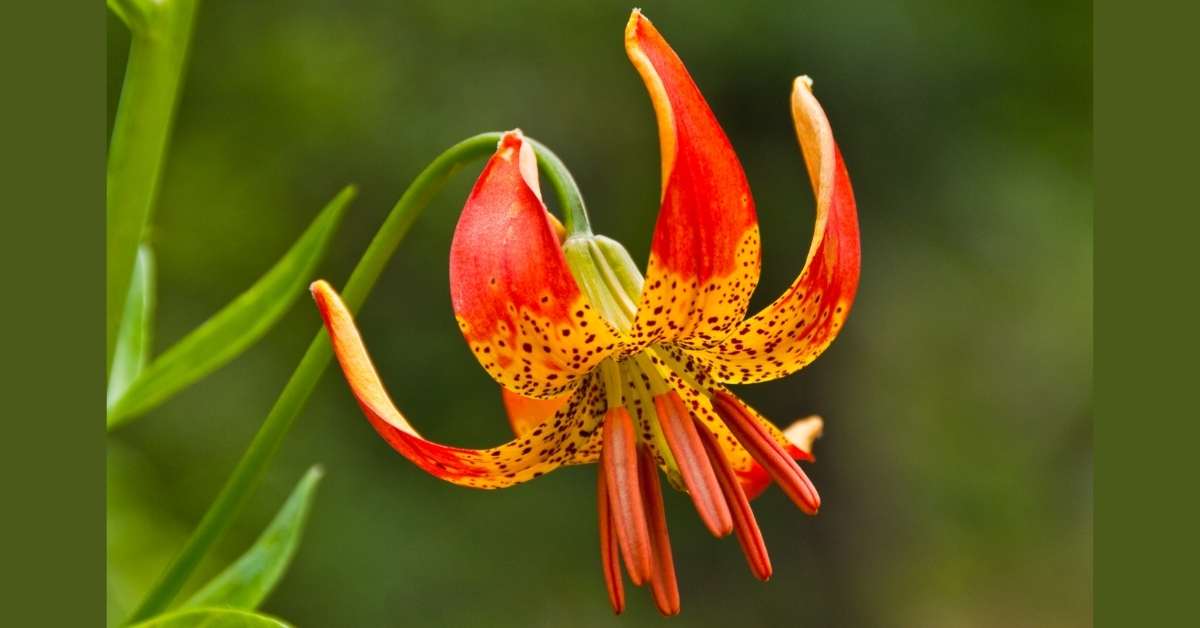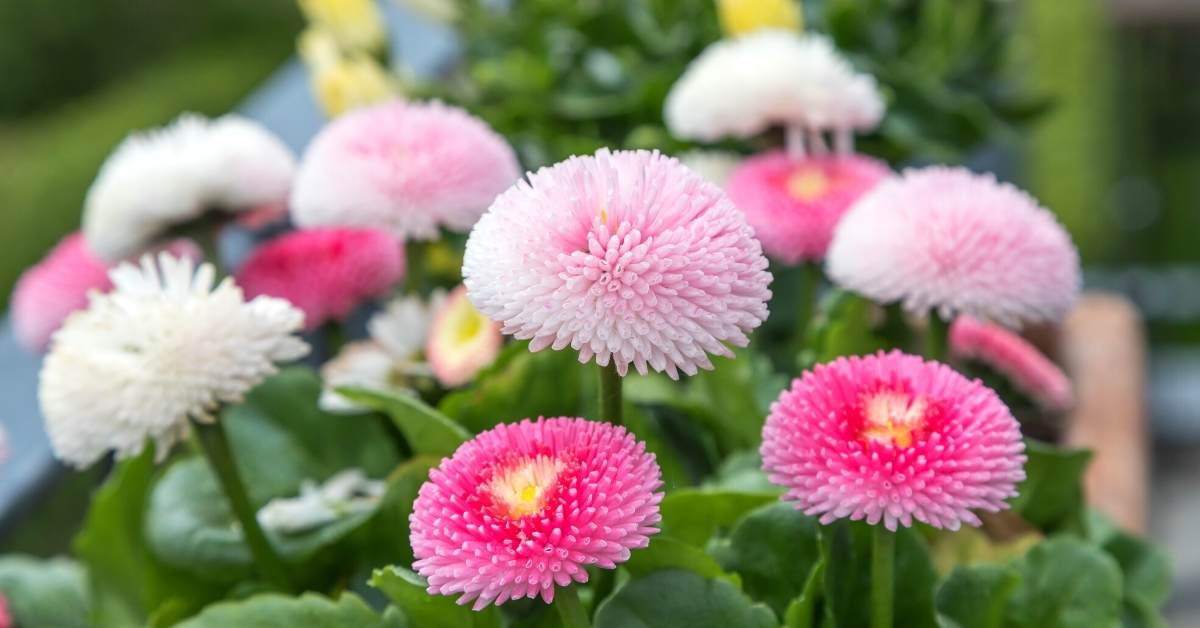Whenever I receive a catalog from an online nursery, I first search for perennials I have never seen or planted before. I tend to focus on those that are considered hardy in USDA Zone 4 (Canada Zone 5), and in today’s post, I’ll talk about Lespedeza Gibraltar, aka Lespedeza thunbergii (lespedeza thunbergii gibraltar), a waterfall flowering perennial.
Moreover, I dive into more details to select only flowering plants with a long bloom period. Finally, I evaluate attractiveness and colors that work well in the English-style flowerbed for those that appear to have potential.
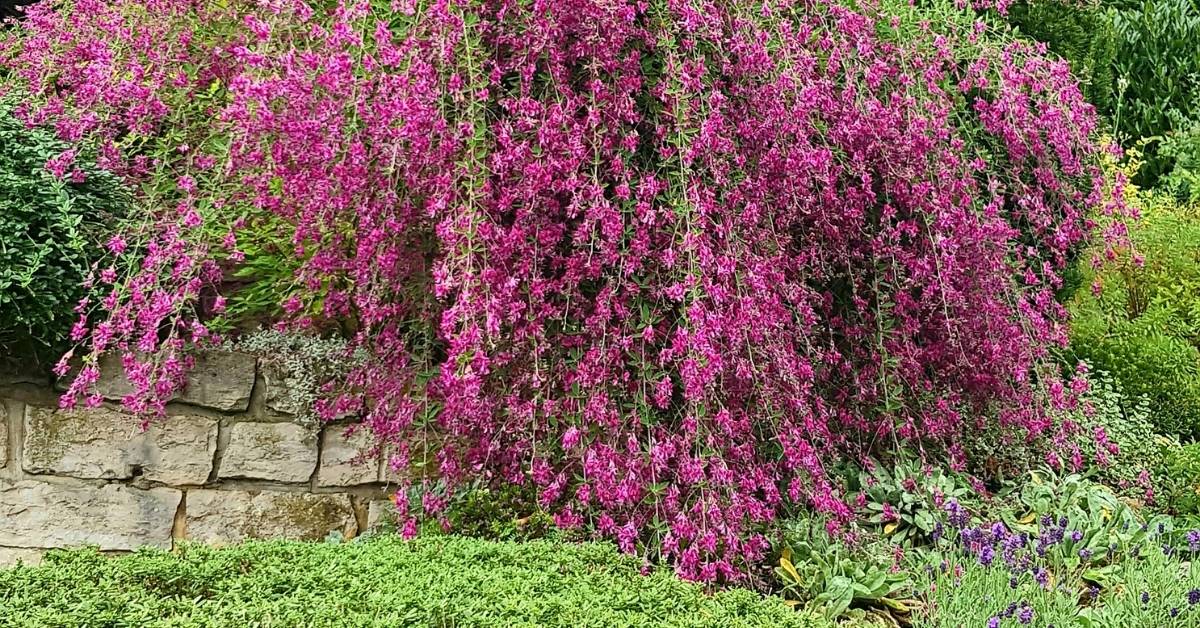
A lens filter may have been used to change the plant’s natural color in order to make it look more appealing in print. An image may have been captured with a lens filter that alters the plant’s actual color to make it appear more attractive in the photo.
Occasionally, the plant is staged with hidden props to hide an unattractive growing habit. The picture of a plant can be transformed into a vision by AI technology that the human eye will never perceive. We’re seldom told that a perennial is unsightly, aggressive, invasive, or short-lived.
Experimenting with newly imported plants takes bravery because, like the now-proverbial Forest Gump box of chocolates, one never knows what one will find. Even though no amount of technological brilliance could disguise the reality that Lespedeza was not a particularly attractive perennial, I disregarded warnings. I bought it nonetheless when I first saw it.
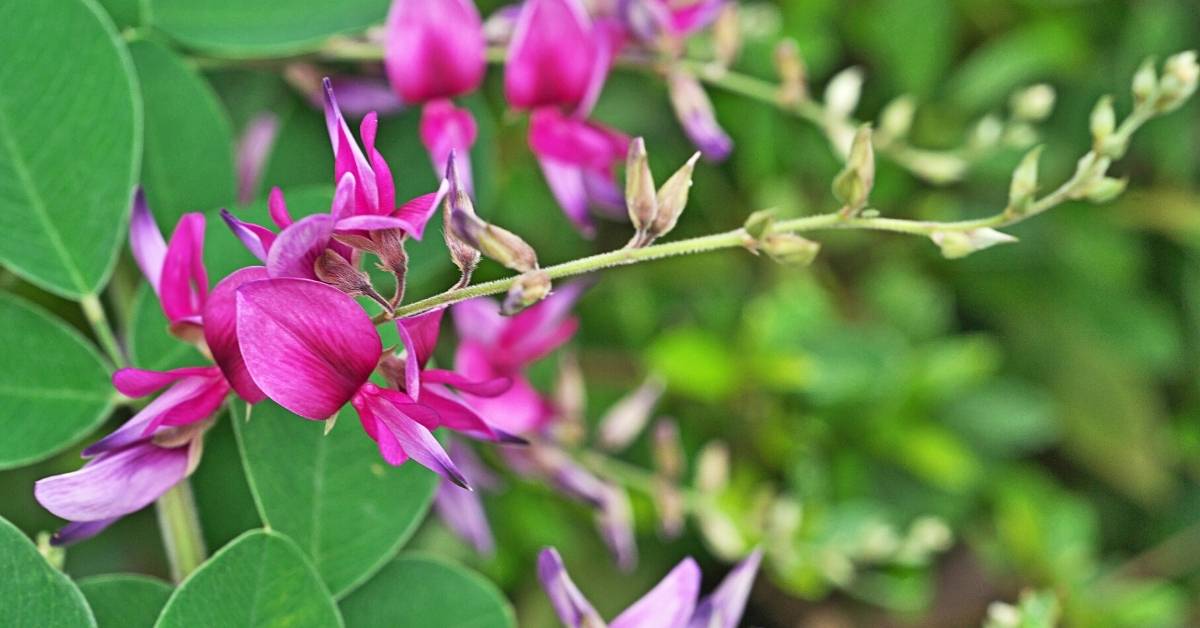
Lespedeza Gibraltar
My online provider did not mention that it was bushy. The close-up of Lespedeza thunbergii Gibraltar showed no sign of weeping or cascading. The small photograph of a close-up of a floret, as well as the marketing hype in the catalog, assures me that;
- This perennial will bloom towards the end of the season and for several months when little else is in flower piqued my interest. Yes, it did.
- Flower in a rich, vivid color, making it attractive from afar. It was as if one likes harsh tones.
- Spread at least five feet in diameter. It did.
- Cascade over sunny slopes. It does.
- Sport foliage that would remain attractive and disease-free all summer, even in hot, humid climates. It did.
Limp and wilting in my autumn garden, unfortunately, before the first season was over, Lespedeza isn’t a perennial in my tidy metropolitan English-style garden, I discovered. It belongs either in a rural setting where it might be valued for its practicality rather than beauty or in a meadow-like garden where unpretentiousness is a virtue.
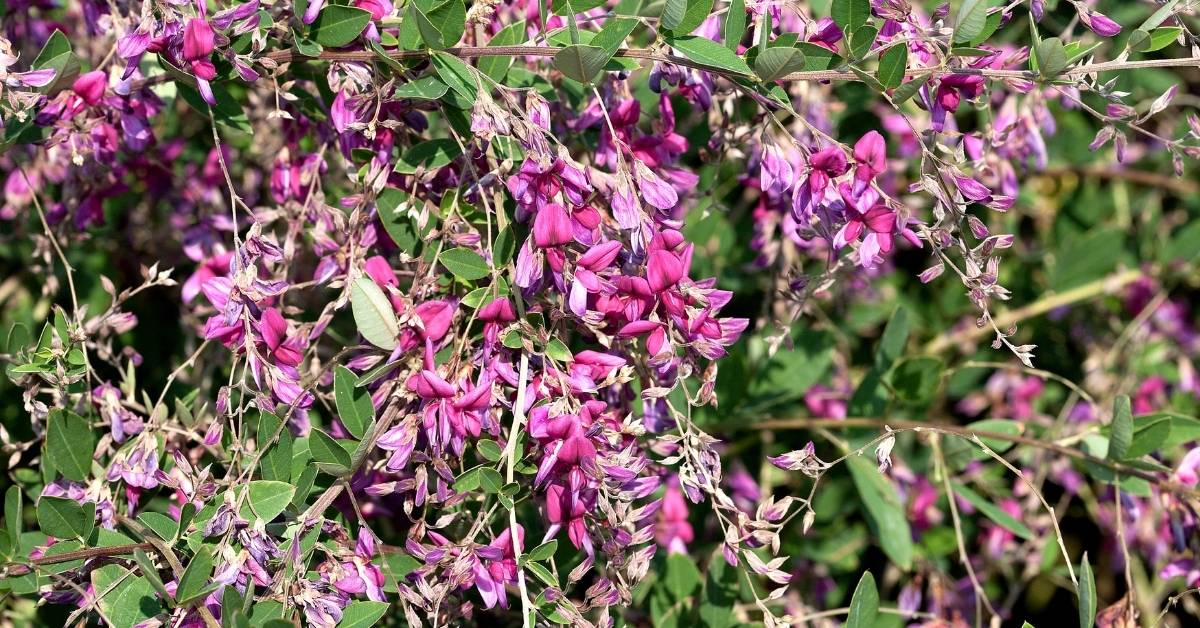
Lespedeza Gibraltar is too robust for the pastel, polite, and strategically planned urban theme. Gardeners are unable to combine it into appealing plant compositions due to its multidirectional growth and purple-pink solid coloring, which generates energy. Even from afar, the pea-like florets seem scraggly in bloom and wilted for a long time after flowering is finished.
There must be a reason why this perennial isn’t available in most nurseries. Perhaps one explanation is that it is a low-growing, messy, flowering shrub that needs to be cut down to the ground every autumn. It’s a perennial want-to-be.
Yet, this plant has merit in the context of a meadow garden or in a matrix of a Piet Oudolf inspired composition. When planted on a slope to cascade visually unobstructed, its texture and color interact well with other low-growing plants.
Its blooms have a sharp tone that combines nicely with the soft colors of ornamental grasses and appears to glow brightly next to strong natural flowers. Lespedeza Gibraltar is a perennial that holds its own among other strong garden personalities, proving once again that one gardener’s foe is another gardener’s buddy in the plant world.
Growing and Planting Lespedeza thunbergii
Gibraltar Bush Clover will grow around 5 feet tall with a spread of 10 feet when fully grown. It tends to fill out down to the ground, so no facer plants are required in front, and it is excellent for planting beneath power lines.
It has a sluggish growth rate and may expect to survive for around 10 years under optimum conditions.
The optimum conditions for this shrub are full sun to moderate shade. It prefers dry to medium moisture levels and well-drained soil, and it will drown if there is any standing water.
Soil requirement
It doesn’t care about the pH of the soil. However, it prefers poor soils. It can tolerate mild urban pollution. This is a variation of a species that is not native to North America.
Gibraltar Bush Clover is a lovely addition to the outside environment, but it’s also a good choice for pots and containers. Plant it near the center of the pot, surrounded by smaller plants and those that spill over the edges. Because of its height, it is often used as a ‘thriller’ in the ‘spiller-thriller-filler’ container combination.

Planting location
It’s best to plant it near the center of the pot, surrounded by smaller plants and those that spill over the edges. It’s even big enough to be grown by itself in a proper container. It is to be assumed that when grown in a container, it will not function exactly as described on the tag.
It’s also worth noting that plants grown in outdoor pots and baskets may demand more regular watering than plants grown in the yard or garden.
How to Care for Lespedeza Gibraltar
Lespedeza Gibraltar is a low-maintenance plant that does not require much care once established. However, there are some tips that can help it thrive and bloom better. First, it is important to prune it back to the ground in late fall or early spring, as this will encourage new growth and prevent it from becoming too woody or leggy.
Second, it is advisable to fertilize it lightly in spring with a balanced fertilizer, as this will boost its vigor and flowering. Third, it is beneficial to water it deeply and infrequently during dry spells, as this will help it cope with drought and heat. Fourth, it is wise to mulch it with organic matter such as compost or bark, as this will help retain moisture, suppress weeds, and improve soil quality.
How to Propagate Lespedeza Gibraltar
Lespedeza Gibraltar can be propagated by seeds, cuttings, or division. Seeds can be sown in fall or spring in a sunny location with well-drained soil. Cuttings can be taken in summer from semi-hardwood stems and rooted in moist sand or perlite. Division can be done in spring or fall by digging up the plant and separating it into smaller clumps with a sharp knife or spade. All methods of propagation require regular watering until the new plants are established.
Attributes of the Environment
Gibraltar Bush Clover is a mounded deciduous shrub with a thick multi-stemmed shape. Its average texture blends into the environment, although it can be effectively adjusted by one or two finer or coarser trees or bushes.
This is a low-maintenance shrub that should be trimmed immediately after it has finished flowering to prevent losing any of the current season’s blooms. It doesn’t have any substantial drawbacks.
The following landscape uses for Gibraltar Bush Clover are suggested:
- Planting in Large Numbers
- Edging on the Border
- Container Planting in the Garden
- General use
How to Use Lespedeza Gibraltar in Landscaping
Lespedeza Gibraltar is a versatile plant that can be used in various ways in landscaping. It can be planted as a specimen or focal point on a sunny border, where its cascading habit and bright flowers will create a dramatic effect. It can also be planted as a ground cover or edging along paths, walls, or fences, where its low-growing and spreading habit will fill the gaps and soften the edges.
It can also be planted as a slope stabilizer or erosion control on banks or hillsides, where its deep roots and drought tolerance will help prevent soil erosion and runoff. It can also be planted as a wildlife attractor or pollinator plant in a naturalistic or meadow garden, where its nectar-rich flowers will attract bees, butterflies, and hummingbirds.
Conclusion
Lespedeza Gibraltar is a perennial shrub that produces purple-pink flowers in late summer and fall. It is a hardy plant that can tolerate poor soils, drought, and urban pollution. However, it is not suitable for every garden style, as it has a sprawling and messy habit that can clash with other plants. It is best planted on slopes or in meadows where it can cascade freely and mingle with grasses and wildflowers. Lespedeza Gibraltar is a plant that demonstrates how different gardeners can have different preferences and perspectives on what makes a plant attractive or useful.
How to Care for Lespedeza Gibraltar
Lespedeza Gibraltar is a perennial shrub that produces purple-pink flowers in late summer and fall. It is a hardy plant that can tolerate poor soils, drought, and urban pollution. However, it has a sprawling and messy habit that can clash with other plants.
Where can I buy Lespedeza Gibraltar?
Lespedeza Gibraltar is not a common plant in most nurseries, but you may find it online from some specialty nurseries or catalogs. You can also try to propagate it from seeds, cuttings, or divisions if you have access to an existing plant.
How can I combine Lespedeza Gibraltar with other plants in my garden?
Lespedeza Gibraltar is best planted on slopes or in meadows where it can cascade freely and mingle with grasses and wildflowers. It can also be planted as a specimen or focal point on a sunny border, where its bright flowers will create a dramatic effect. However, it is not suitable for every garden style, as it has a solid color and a multidirectional growth that can be hard to match with other plants.
